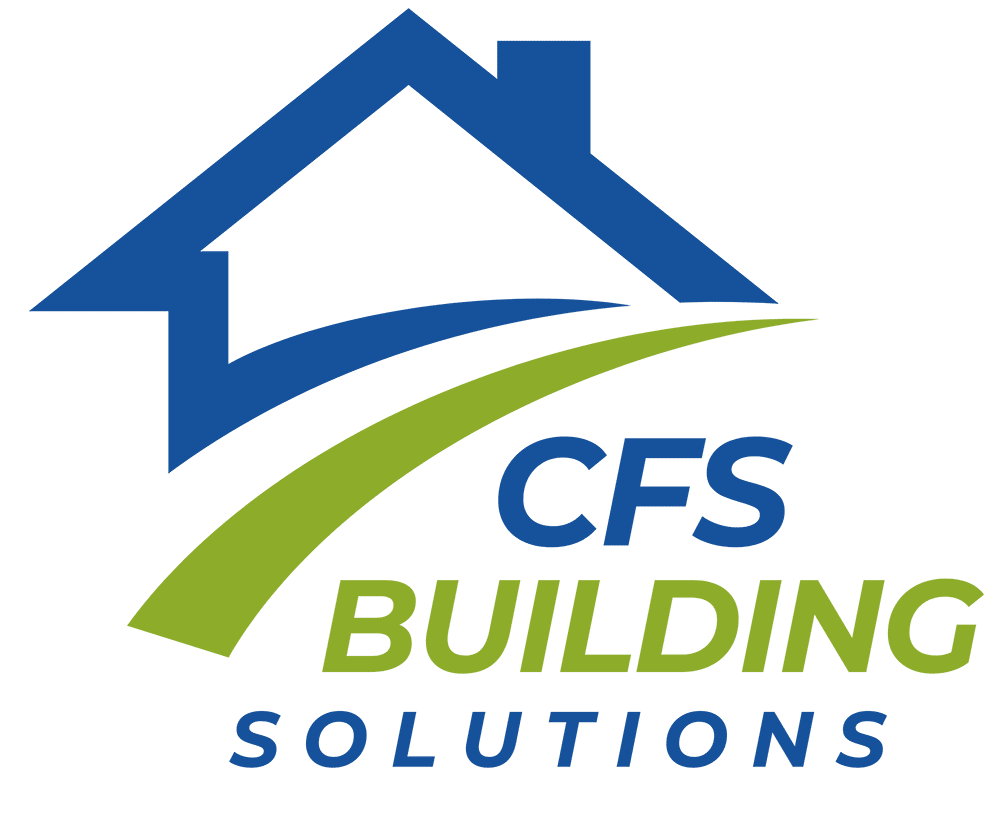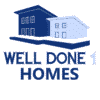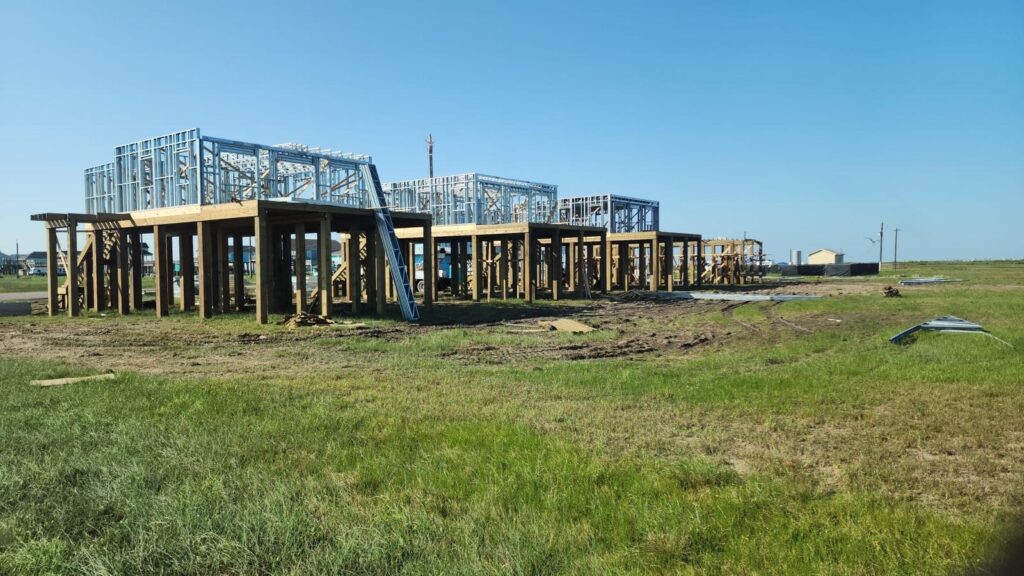Why Fireproof Homes Matter
As wildfires increase across the U.S., homeowners are seeking ways to build fireproof homes that protect their families and investments. Traditional wood framing and materials are highly susceptible to fire, leading to extensive damage in the event of a blaze. To mitigate these risks, homeowners are turning to fire-resistant building materials like Cold-Formed Steel (CFS), MGO sheathing, and advanced systems like the Tredwall system. These innovative solutions provide superior protection against fires, ensuring greater safety and long-term cost savings.
Understanding the Risk – Wood Framing and House Fires
Wood framing has long been a staple in residential construction due to its affordability and ease of use. However, wood is a combustible material, posing a significant fire risk. In the event of a house fire, wood framing can contribute to the rapid spread of flames, potentially causing extensive property damage and endangering lives.
According to the US Fire Administration, residential house fires in 2021 resulted in 353,500 fires, 11,400 injuries, 2,840 deaths, and a dollar loss of $8.86 billion. Data from Colorado shows that manufactured homes, largely constructed with wood, account for an average of 11,400 fires annually, leading to $179 million in property damages, 434 injuries, and 206 deaths.
Fires can spread rapidly; within 3 to 5 minutes, an entire home may be engulfed due to combustible materials like wood and synthetic furnishings. Homes spaced closer together face even greater risks of fire spread, particularly in windy conditions.
The Benefits of Cold-Formed Steel (CFS) for Fireproof Construction
Cold-Formed Steel (CFS) is a lightweight, durable material made from steel sheets that are cold-formed into structural components. CFS is increasingly being used as a framing material due to its fireproof properties and numerous benefits over traditional wood framing:
- Non-Combustibility: Unlike wood, CFS won’t burn or warp under high temperatures, providing a superior fire-resistant framing system. Additionally, CFS does not contribute to flame spread during a fire incident, enhancing overall safety.
- Reduced Fire Load: Steel framing reduces the total combustible material in a building, lowering the risk of fire hazards and limiting potential fire-related damage.
- Fire-Resistant Coatings: Steel framing can be treated with fire-resistant coatings that delay structural failure during a fire, providing more time for evacuation and fire containment.
- Durability and Longevity: Steel does not degrade, warp, or rot over time, ensuring its fire-resistant properties remain effective for the lifespan of the structure.
- Structural Integrity: CFS retains its strength at high temperatures longer than wood, delaying structural collapse and allowing more time for evacuation during a fire.
- Eco-Friendly: CFS is 100% recyclable, making it a sustainable choice for modern construction projects.
- Lowers Insurance Premiums: The reduced fire risk of steel-framed homes often results in lower insurance costs, with potential savings of 20% annually on general property insurance and significant reductions in builders’ risk insurance.
Fire-Resistant Siding, Sheathing, and Roofing
To protect your home from fire, it’s important to choose fire-resistant siding, sheathing, and roofing materials. Several options are available, each offering superior protection:
- Fire-Resistant Siding: Fiber cement siding, stucco, and metal siding are non-combustible and ideal for fireproof construction. Stone veneer and brick veneer also provide excellent fire-resistant exteriors.
- Fire-Resistant Sheathing: MGO (Magnesium Oxide) sheathing and Type X gypsum board provide exceptional fireproofing capabilities, slowing the spread of flames and maintaining structural integrity.
- Fire-Resistant Roofing: Metal roofing, clay, and concrete tiles withstand high heat and ember exposure during wildfires, offering critical fire protection.
Innovative Fireproofing with the Tredwall System
The Tredwall system is a revolutionary approach to fireproof construction that combines MGO, a fire-resistant membrane, mesh, and a cork finish. This multi-layered system provides:
- Complete Fire Resistance: The MGO board acts as a fire-resistant barrier, while the membrane and mesh add additional protection.
- Mold and Water Resistance: The system is resistant to mold and moisture, ensuring long-term durability.
- Efficiency: Tredwall eliminates the need for multiple trades such as sheathing crews, finishers, and painters, simplifying the construction process.
- Cork Finish: The cork exterior provides insulation, a thermal break for all climates, and further fire-resistant properties. Cork also resists UV damage and requires minimal maintenance, making it a cost-effective choice.
MGO: A Game-Changer in Fireproofing
MGO is an advanced fire-resistant material that offers:
- Fire Resistance: Withstanding temperatures up to 1,200°F (649°C), MGO is one of the best options for fireproof sheathing. MgO boards often provide fire ratings of one to two hours, depending on thickness and specific product formulations.
- Moisture and Mold Resistance: MGO does not absorb moisture, preventing mold growth and water damage.
- Sustainability: MGO is non-toxic and eco-friendly, making it a safe, sustainable choice for construction.
- Performance Under Fire: MGO’s resistance delays fire spread, providing occupants additional evacuation time and reducing property damage.
Fire-Resistant Insulation Options for a Safer Home
Choosing the right insulation is crucial for fireproof homes. Options include:
- Mineral Wool (Rock Wool) Insulation: Non-combustible and able to withstand temperatures up to 2,000°F (1,093°C), it offers excellent fire protection and soundproofing.
- Fire-Retardant Fiberglass Insulation: Treated with fire retardants, fiberglass provides fire resistance and thermal performance.
- Polyisocyanurate (Polyiso): This material combines high fire resistance with superior thermal performance, ideal for both warm and cold climates.
Cork: A Sustainable Fireproof Finish
Cork is an eco-friendly, renewable material offering:
- Thermal Break: Cork acts as a natural thermal break, improving energy efficiency by regulating temperature in both hot and cold climates.
- Fire Resistance: Cork is inherently fire-resistant and does not release toxic gases during combustion. While specific fire ratings vary, cork can slow the spread of fire and add insulation.
- Durability: Resistant to mold, moisture, and UV damage, cork provides a long-lasting finish requiring minimal maintenance.
- Eco-Friendly: Harvesting cork does not harm trees, promoting biodiversity and reducing the carbon footprint.
- Aesthetic Appeal: Its natural appearance complements modern architectural designs.
The Role of Fireproof Materials in Slowing Fire Spread
Fire-resistant materials like MGO, fiber cement boards, and cork play a critical role in delaying fire spread and reducing property damage:
- Magnesium Oxide (MgO): MgO boards withstand extreme heat (up to 1,200°F) and maintain integrity for one to two hours, significantly slowing fire progression.
- Fiber Cement Boards: These non-combustible boards resist high temperatures, serving as effective barriers to fire spread.
- Cork: While primarily a finish material, cork’s fire resistance and insulating properties provide additional protection by acting as a thermal break.
By integrating these materials, homes gain critical fire resistance, reducing the risk of fire spread and providing occupants with crucial evacuation time.
Why Fireproofing Your Home is Essential
Fireproofing protects your home from wildfire risks, offering peace of mind and long-term cost savings. Using fire-resistant materials like CFS, MGO, and cork, along with advanced systems like Tredwall, homeowners can significantly reduce fire damage risks.
Key Benefits:
- Higher resale value, especially in wildfire-prone areas.
- Insurance savings through reduced risk profiles.
- Lower maintenance and repair costs over time.
Conclusion
Building a fireproof home using Cold-Formed Steel (CFS) and innovative materials like MGO sheathing, Tredwall systems, and cork finishes provides lasting protection and sustainability. Incorporating fire-resistant insulation, siding, and roofing enhances safety and energy efficiency. With rising wildfire risks, these choices are essential for protecting your family, property, and investment.


